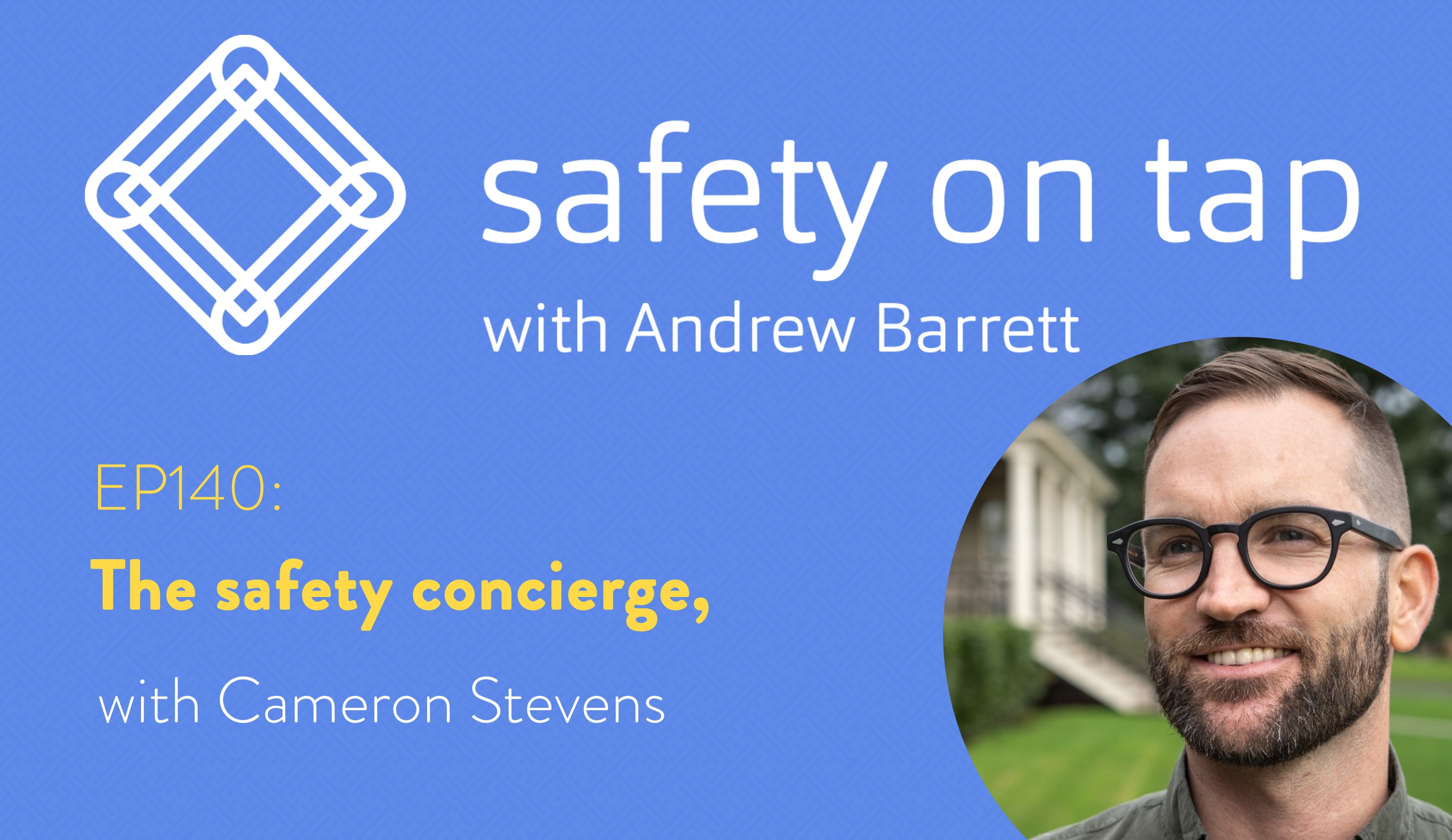Today’s guest brings so much learning to you today. A safety concierge, a career with laser-focused intent, not fitting into a box, and understanding where the real value lies in customer interaction. You’re in for a treat.
Hey, it’s Andrew, and this is Safety on Tap.
Since you’re listening in, you must be a leader wanting to grow yourself and drastically improve health and safety along the way. Welcome to you, you’re in the right place. If this is your first time listening in, thanks for joining us and well done for trying something different to improve! And of course, welcome back to all of you wonderful regular listeners.
Cameron is a career health and safety professional, with health and safety experience across many sectors with roles from the frontline into senior leadership in high-risk industries. It is his work outside of safety which really cranks up my curiosity. He is currently a Solutions Engineer at RealWear, which their website says is the world’s best hands-free wearable rugged Android tablet for industrial workers. But you won’t hear a lot about RealWear or their products in this episode, and that will make sense to you at the end. Cameron is teaching us not just in what he says, but what he doesn’t say.
Here’s Cameron:
Get connected with Cameron, he wants to hear from you. You can find him on Linkedin, or email cameron.stevens@pocketknifegroup.com
You heard how curiosity fed my conversation with Cameron, he doesn’t quite fit any mould but when you seek to understand, you learn how so much of how he thinks and what he does makes sense, he is very intentional. And I was surprised and delighted hearing how Cameron is skilling himself for the future he seeks to create, which is very much aligned with the conversation I had with Sheri Greenwell in episode 135, and draws on my interview with futurist Dave Wild in episode 66. We can either let the future happen to us, without much control, or we can create a future with foresight and intent, which includes the skills we need for the future.
I am hosting a free webinar on Future Skills for OHS professionals, based on global skills predictions and the INSHPO Safety Professional Capability Framework. This will help you reflect on whether you and your team are future-ready, and what you can do to improve your skills. Get all the details including how to register over at safetyontap.com/future-skills
I must confess I did want to hear more about his current role and this technology, for a bunch of reasons including my belief that voice is going to explode as the central focus of technology over the short to mid-term. But he didn’t talk much about it, explaining to me later that it would make more sense for him to focus on the way he ended up in this role, why he is there, and what it means to be a Solutions Engineer – a technology concierge as he mentioned. The tech is shiny, but his success is about helping businesses to solve problems with tech. There is a massive lesson in that, and it came not from what he said but what he didn’t say. Super insightful guy.
Here are my three takeaways from that chat with Cameron Stevens:
Takeaway #1: We started talking about evidence-based practice. We talked about innovation, and how a lack of evidence is not a reason not to try something. Cameron’s experience is safety people say no, they see a downside, and lots of others see the upside, opportunity. The keyword I circled in my notes was potential. Evidence is not about potential, it’s about actual – actually proven results, it’s in the past tense. If actual results are available, actual evidence, we must not simply guess about potential. But equally, seeing potential is the driver for innovation, for performance improvement.
Takeaway #2: Seeing potential means seeing unexplored insights, untested hypotheses. Outside evidence, or what I call Other People’s informs our internal potential. If you see potential (what could go right), instead of just downside (what could go wrong), it’s a good start. If you have no evidence, to begin with, if this potential you see in your organisation is unproven, go and test it for yourself. We should all be evidence consumers, but we can and should equally be evidence creators and innovators at the same time. Try saying ‘yes, and’, instead of ‘no, but’, and see where that leads you.
Takeaway #3: A safety concierge. I love this kind of imagery because it helps bring Cameron’s conception of our role to life. We talked about what a concierge does, how they think and work. Service to people. Getting results. Not telling the customer what they need, delivering what they want and over-delivering with what they need. It extends my thinking into the idea that we are accessible to people, literally and metaphorically. We are approachable. People know when to come to us and they do. We can achieve results that others cannot. We are impeccable. It is not a perfect metaphor for 100% of our work, but I love how it helped me think about our effectiveness, how we are perceived, and how we might improve. What images or metaphors do you have for your work, your team? What do others project onto you? How could you grab and harness the power of a more helpful image?
Thanks so much for listening. Until next time, what’s the one thing you’ll do to take positive, effective or rewarding action, to grow yourself, and drastically improve health and safety along the way? Seeya!
And here’s your FREE download of the full transcript of this episode.
Feel free to share this with your team/colleagues!

